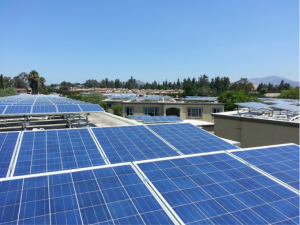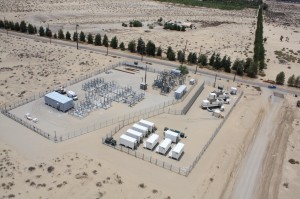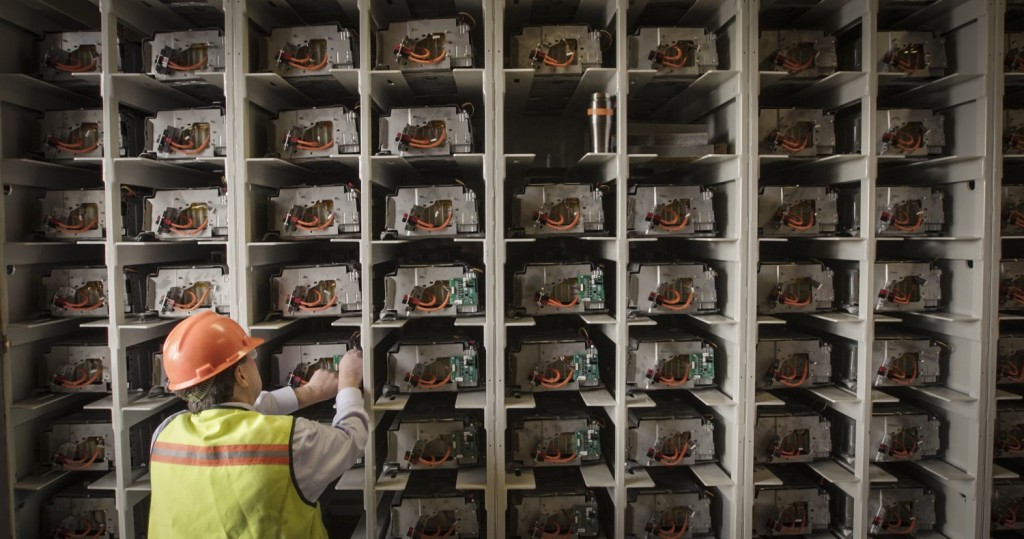 With more solar panels, internet connected home appliances, electric vehicles, and small-scale batteries, California will soon have millions of “distributed” energy resources it can tap into to make the grid more efficient and clean. The entity in charge of managing the grid just made it much easier to connect and aggregate these items as a bulk resource:
With more solar panels, internet connected home appliances, electric vehicles, and small-scale batteries, California will soon have millions of “distributed” energy resources it can tap into to make the grid more efficient and clean. The entity in charge of managing the grid just made it much easier to connect and aggregate these items as a bulk resource:
California is already busy creating new regulations and market structures to integrate rooftop solar, behind-the-meter batteries, plug-in electric vehicles and fast-acting demand response systems into its grid. This week, California’s grid operator took another step down this path — one that could allow these resources to tap the state’s grid markets as a revenue-generating resource, possibly as early as next year.
On Wednesday, the California Independent System Operator (CAISO) published a proposal (PDF) for creating a new class of grid market players, known as distributed energy resource providers — DERPs for short. In simple terms, the proposal sets rules for how DERs can be aggregated and dispatched to serve the same grid markets open to utility-scale energy installations today.
As the rules roll out and get refined, the state will become an international leader on integrating these resources into the grid, while providing owners of these assets with an additional revenue stream — further encouraging their deployment.
It’s one of the best uses I’ve seen for used EV batteries — putting them to use as mobile charging devices for EVs. That’s what Freewire is doing, and their product is a top four finalist for the SAFE energy security prize, to be announced at the end of July. Here’s the promo video:
You can read more about what it will take to boost a market for used EV batteries in Berkeley / UCLA Law’s Reuse and Repower report.
SDG&E employed the Borrego Springs Microgrid because the transmission line that usually feeds the community had been damaged by lightning. SDG&E crews needed to replace or repair three transmission poles, which would usually require a 10-hour sustained outage to the entire community of Borrego Springs. However, SDG&E was able to call on the Borrego Springs Microgrid to avoid the impact of a major outage. The Borrego Springs Microgrid uses advanced technologies – including local power generation, energy storage, and automated switching – to create a more resilient local grid for the benefit of customers. The Microgrid is connected to the centralized energy grid, but can disconnect from the larger grid and function independently during emergencies, supplying vital electricity to the local community through its onsite resources.
UCSD’s microgrid performed a similar function back in 2011, helping to avert a worse power outage for San Diego. But this Borrego Springs example is unique.
Microgrids will increasingly become a critical resilience strategy as climate change unleashes more extreme weather, plus more dependence on intermittent renewables.
As they say, the future is already here, just not widely distributed yet.
This can only be good news for advocates of a cleaner electricity sector:
California’s energy storage mandate calls for the state’s big three investor-owned utilities to procure 1.3 gigawatts of energy storage over the coming decade, with a first round of 200 megawatts to be awarded by the end of this year. But the rush of proposals is already overwhelming this target, according to state grid operator California ISO, which reported that more than 2,000 megawatts’ worth of storage projects had applied for grid interconnection as of last year.
As the article points out, most of these projects won’t be viable. Still, it’s good news that there is enough interest, product, and potential cost-competitiveness in the energy storage community to make these proposals. Given that the two Southern California investor-owned utilities are independently buying energy storage as part of a plan to replace the shuttered San Onofre nuclear plant and retiring natural gas plants, the energy storage market should continue to boom in California.
We’ll need this energy storage to meet peak energy demand, integrate variable renewables, and save ratepayers money while reducing pollution. Not a bad quadruple win for this most important clean technology area.
Not just electric vehicle batteries are good for repurposing. At an off-grid site in Yellowstone:
Used Toyota Camry Hybrid battery packs will now store energy generated from solar panels at the Lamar Buffalo Ranch field campus within the park.
The system includes 208 Camry Hybrid nickel-metal-hydride battery packs recovered from Toyota dealers, providing a total of 85 kilowatt-hours of storage capacity.
Many of these kinds of batteries have been used in developing countries for distributed and cheap energy storage. But it’s nice to see them finding a role here in the U.S. Eventually, policy makers need to help facilitate a market for all these used hybrid and electric vehicle batteries, as we discussed in the UC Berkeley/UCLA Law report Reuse and Repower last year.




